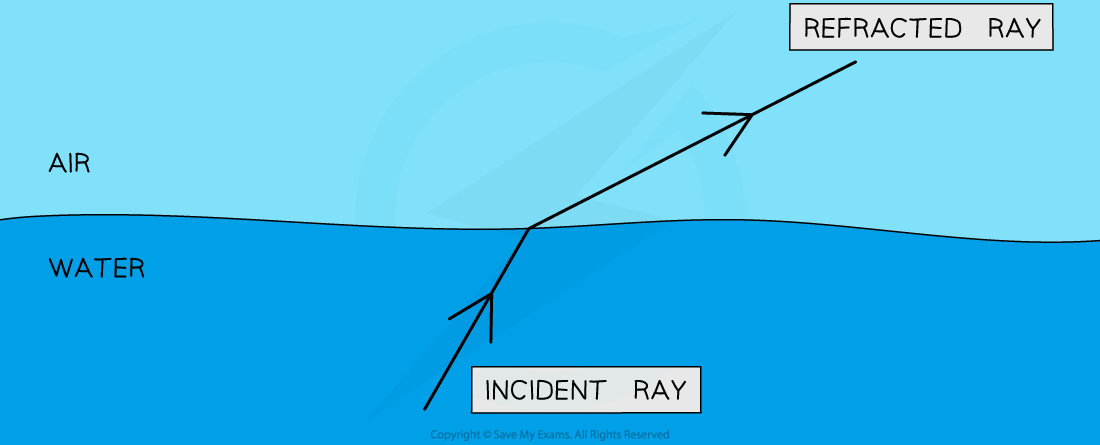Wave Behaviour (Cambridge (CIE) IGCSE Physics): Revision Note
Exam code: 0625 & 0972
Reflection, refraction & diffraction
All waves, whether transverse or longitudinal, can undergo:
reflection at a plane surface
refraction due to a change of speed
diffraction through a narrow gap
In optics, a transparent material is called a medium
When referring to more than one medium these are called media
Angles of light are measured from an imaginary line called the normal
The normal is always drawn perpendicular to the boundary between two media
Reflection
Reflection occurs when:
A wave hits a boundary between two media at a plane surface and does not pass through, but instead stays in the original medium
An example of reflection

An identical image of the tree is seen in the water due to reflection
Refraction
When waves enter a different medium, their speed can change
This effect is called refraction and it occurs when:
A wave passes a boundary between two different transparent media and undergoes a change in speed
When a wave refracts, as well as a change in speed, the wave also undergoes:
A change in wavelength (but frequency stays the same)
A change in direction
An example of refraction

Waves can change direction when moving between materials with different densities
The direction of the incident and refracted rays are also taken from the normal line
If the waves slow down, they will bunch together, causing the wavelength to decrease
The waves will also start to turn slightly towards the normal
If the waves speed up then they will spread out, causing the wavelength to increase
The waves will also turn slightly away from the normal
Diffraction
When waves pass through a narrow gap, the waves spread out
This effect is called diffraction
Waves diffracting through a narrow gap

Diffraction: when a wave passes through a narrow gap, it spreads out
Examiner Tips and Tricks
When drawing waves being reflected take care to:
Make sure that the angle of incidence is equal to the angle of reflection
Keep the wavelength of the waves the same
Similarly, when waves are diffracted the wavelength remains constant.
Refraction is the only wave effect in which the wavelength changes.
Remember:
Refraction is the name given to the change in the speed of a wave when it passes from one medium to another. The change in direction is a consequence of this.
Factors affecting diffraction
Extended tier only
The extent of diffraction depends on the width of the gap compared with the wavelength of the waves
Diffraction is the most prominent when the width of the slit is approximately equal to the wavelength
As the gap gets bigger, the effect gradually gets less pronounced until, in the case that the gap is very much larger than the wavelength, the waves no longer spread out at all
Effect of gap size on diffraction

The size of the gap (compared to the wavelength) affects how much the waves spread out
Diffraction can also occur when waves curve around an edge or barrier
The waves spread out to fill the gap behind the object
The extent of this diffraction also depends upon the wavelength of the waves
The greater the wavelength then the greater the diffraction
Effect of wavelength on diffraction around an edge

When a wave goes past the edge of a barrier, the waves can curve around it. Shorter wavelengths undergo less diffraction than longer wavelengths

Unlock more, it's free!
Did this page help you?